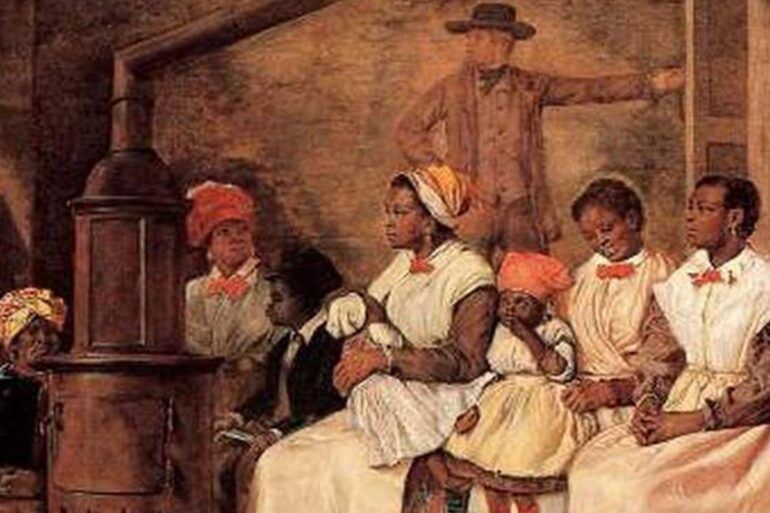A denizen of the town of Paisley, described in the Paisley Advertiser newspaper of 7 August 1847 as:
“His opinions and manners amalgamated with those around him, and the characteristics of his life have been those of an industrious and sober citizen, a good husband and an affectionate and kind-hearted parent.”
Peter Burnet often referred to as “Black Peter” was a freeborn African American who made the Paisley his home for over sixty years in the late 18th through to the early 19th century.
He was born in 1764 on the estate of Thomas Todd in Virginia, USA. Although Peter was freeborn, his grandfather had been brought from Africa to the USA via the transatlantic slave trade. By the age of twelve he took the opportunity to leave to explore further afield and seek a new life for himself. He travelled to Chesapeake Bay where he joined the ship’s company of the British vessel the “Fencastle.”
After some time as a cabin boy and when the vessel reached New York, Peter left the ship and went into service for a variety of wealthy individuals. In the employment of a wealthy merchant named William Torrance, Peter agreed to accompany him home to Glasgow. In Glasgow he was encouraged to leave service and seek other employment which would give him a trade. He was sent to Kilmarnock and introduced to George Tannahill to learn the trade of being a millwright. However, it was agreed that a more lucrative position for Peter would be in the textile industry with the trade of being a weaver. George Tannahill had a cousin who was a weaver in Paisley. Around 1780 Peter was introduced to James Tannahill and a lifelong association with the Tannahill family was begun. James Tannahill has several children and one of them was Robert Tannahill who had followed the family trade of weaving whilst pursuing his passion for writing poetry.
Peter Burnet learned the trade of weaving from John Boag. As a weaver Peter enjoyed the prosperity which came with that trade and was well liked around the town as he not only liked to be fashionably well dressed but he enjoyed the entertainment of dancing. By 1788 however the weaving industry went through a period of economic downturn and Peter went to Edinburgh to go into service returning once again to Paisley in 1790 when the weaving trade returned to profit.
In 1810 Peter lost a close friend with the death under tragic circumstances of the weaver poet Robert Tannahill. On Thursday 17 May 1810, the body of the poet was found drowned in a culvert of the Maxwellton Burn. Reports of the tragic events outlined how Peter selflessly dived into the culvert to recover the body of his friend. Gratitude for this act of friendship was repaid in part by the Tannahill family when Peter faced hardship. Sometime after the loss of his friend, Peter was accused of owing his landlord money and he was imprisoned in the town’s Tolbooth. The Tannahill family helped and provided for a bed and food during this period of imprisonment. Peter was eventually released after taking an Oath of Poverty. This event chastened Peter’s lifestyle and after promising to be more fiscal he married Peggy Boag the daughter of his first employer. This marriage was short lived as Peggy died in childbirth along with the child. He married for a second time; his new wife came from Glasgow with three children the product of this marriage. Tragically Peter was once again a widower when his second wife died of consumption. Peter married again but was widowed for a third time.
It is testament to the endearment felt towards Peter that in 1841 as he struggled with ill health and old age that a friend John Parkhill wrote a biographical sketch of Peter’s life which appeared as a pamphlet for sale, the proceeds going to the financial support of Peter.
Peter Burnet’s died at the age of eighty-three on Monday 2 August 1847. His life had been full of incident, he had travelled far and at the end the buddies of Paisley had recognised him as one of their own.
